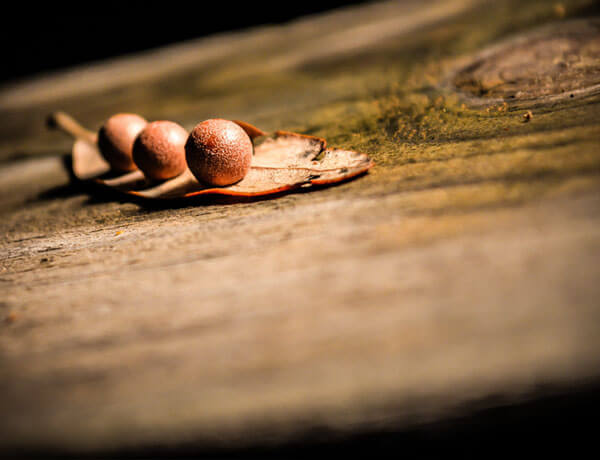-

Exciting Spring and Summer Bulbs
6th March 2016 • Timely Advice • Stephanie DonaldsonThere’s more to your spring garden than daffodils, crocuses and tulips. Yet so embedded are these beautiful flowering bulbs in our gardening psyche that it’soften hard to see beyond them – which is a great shame. At this time of year, garden centres and nurseries are groaning with traditional spring flowering bulbs but also some far more exciting and arguably classier late spring and summer bloomers. Let’s take a look around and let’s get planting.
Alliums
For late spring and early summer interest, you can’t do better than alliums. Their common name is ‘flowering onion’ but this inelegant moniker hardly does them justice. The flowers grow on leafless stalks, so it’s good to plant them amongst other perennials which will hide the scrappy lower leaves, and a well-drained soil in full sun is really all that you need for success.
The summer flowering A.’Purple Sensation’ has emerged as one of the favourites in recent years. Growing to about a metre high it has spherical heads of star-shaped, deep violet flowers, but in order to stop paler seedlings appearing in subsequent years you have to cut down the old flower heads before the seeds ripen.
A.’Globemaster’ is a little shorter but, as the name suggests, the flower heads are quite something to write home about, reaching almost 20cm across.
For some real height at the back of the border, A.giganteum will grow up to your chin in June, by which time the wonderful blue grey leaves have died down.
At the other end of the scale is A.sphaerocephalon, the excitingly named round headed leak. Look out for the small insignificant bulbs and plant them now in a gritty soil facing the sun. The diminutive rounded flower heads are a purpley red and look superb in July and August, bobbing around between knee and waist height amongst the silvery green grass Carex ‘Frosted Curls’ or it’s bronze leaved cousin C.buchananii.
Nectaroscordumsiculum ‘Bulgaricus’ always used to be considered an Allium and if you crush a few leaves the smell will let you know why. The stalks carry drooping, bell-shaped flowers with a green and purple tinge, but as the seedheads ripen they reach skywards to make pointed clusters that look like a clump of toadstools. Very chic!
Foxtail Lilies
The foxtail lily, Eremurusrobustus, is actually a tuberous root like a Dahlia. In late May and June it sends out an elegant, stately raceme of pink flowers on a stalk nearly three metres tall. I’ve grown this plant since seeing the sulphur yellow flowers of E.spectabilis growing wild on a rocky slope in Turkey, but they seem to do best here in a sandy fertile soil with sharp drainage.There’s also a rather graceful white version, E.himalaicus.
All will benefit from a sheltered spot and a good mulch in autumn and, as an added bonus, will do pretty well in alkaline soils.
Asphodels
Some of the more interesting bulbs are harder to find and you need to search in some of the bulb catalogues. Asphodels can be planted in March or October, and one of their major assets is the ability to do well in fairly poor soils.
The spring flowering yellow Apshodel, A.lutea, seems to do OK in well-drained or slightly damp soil where it sends out its spikes of star shaped flowers.
Giant Lily
One summer flowering bulb which has always eluded me is the giant lily Cardiocrinumgiganteum. This uber lily has wonderfully fragrant white flowers on stems 2 to 2.7 metres high, and it is truly awesome. On the downside, it takes a couple of years to flower from a bulb and double that from offsets.
I’ve twice planted it in sheltered corners of my garden in deep soil laden with leaf mould and compost but I keep moving house before anything appears above the glossy green leaves. My present garden is everything this lily hates: chalky, dry, sun baked soil, so perhaps I should admit defeat gracefully.
Must Plant
If you only plant one thing this spring, take a look at Arum italicum subsp.italicum ‘Marmoratum’, also known as Lords and Ladies.
When?
Plants can be bought in leaf from nurseries in autumn. Alternatively, you can divide the clumps and tubers and replant 15cm deep.
Where?
Grow in a humus rich soil in a sheltered site.
Why?
Growing from a tuber, this perennial bears pale greenish white flower spathes in early summer if grown in full sun. Orange-red berries appear in autumn followed by arrow shaped, silvery veined leaves that last until spring.The leaves are bigger and better if grown in shade.
History
The root of the native plant, A. maculatum, can be cooked and eaten and is the source of arrowroot. The name ‘Lords and Ladies’ is thought to be a polite name introduced by the prudish Victorians to replace Cuckoo Pint and various other names which were apparently quite rude.
Varieties
A. creticum has creamy white or deep yellow flower spathes and plain unmarked leaves.
Supplier
Stillingfleet Lodge Nurseries, Yorkshire, 01904 728506
Article provided by independent content writer and rookie gardener Mike James, working together with friend and multi award winning landscape gardener
Andy Sturgeon, who provided the information in this piece.









